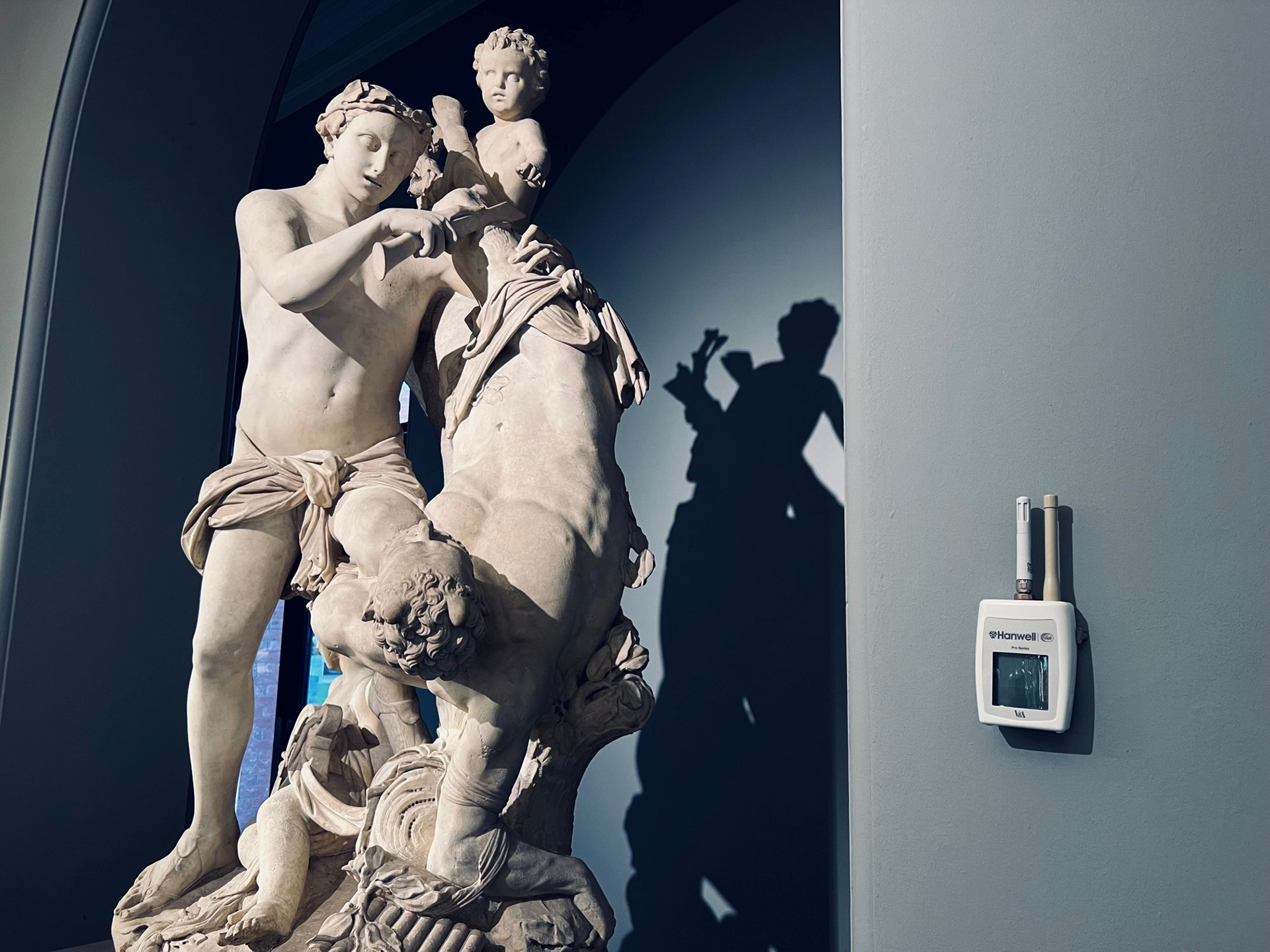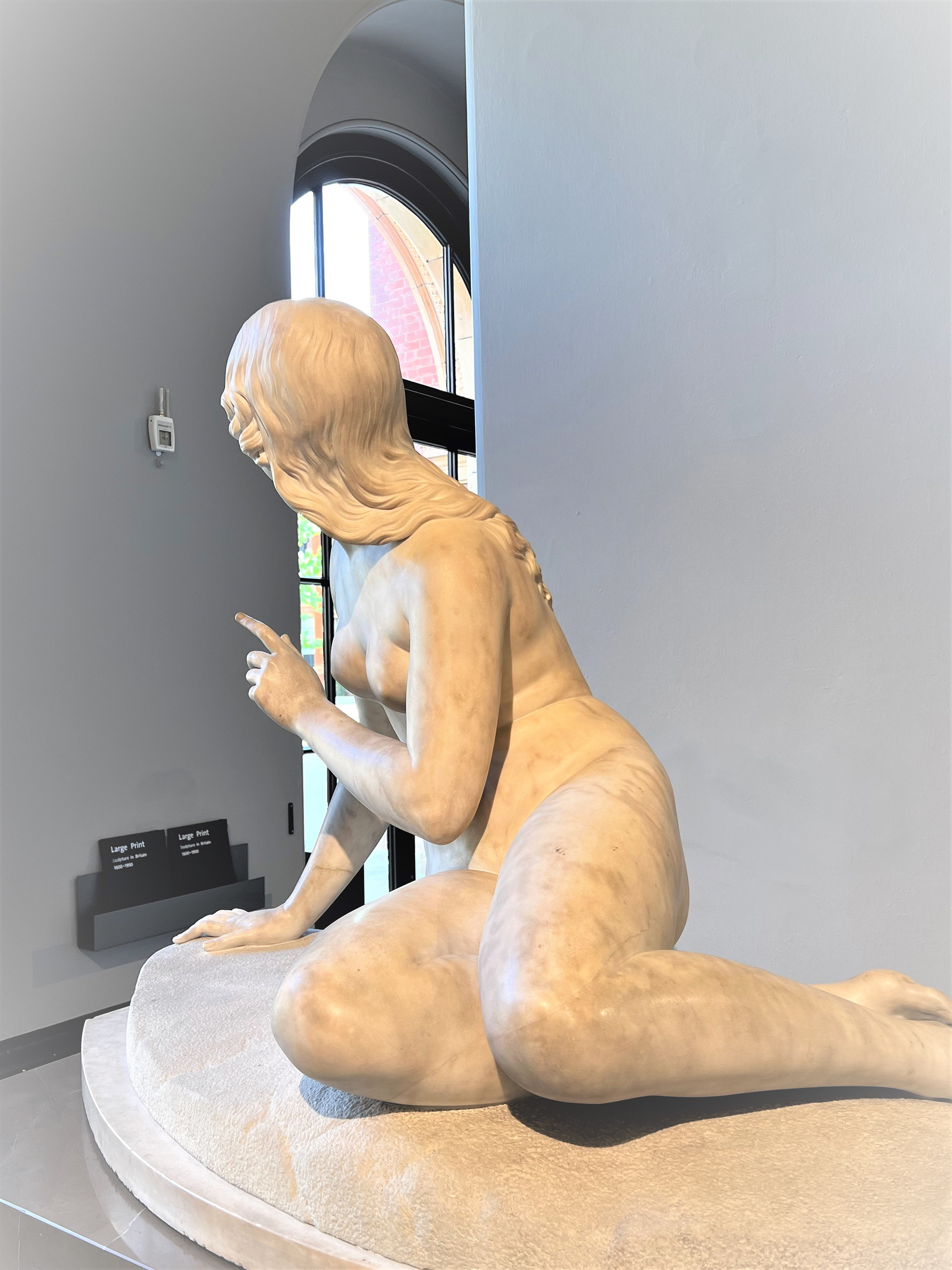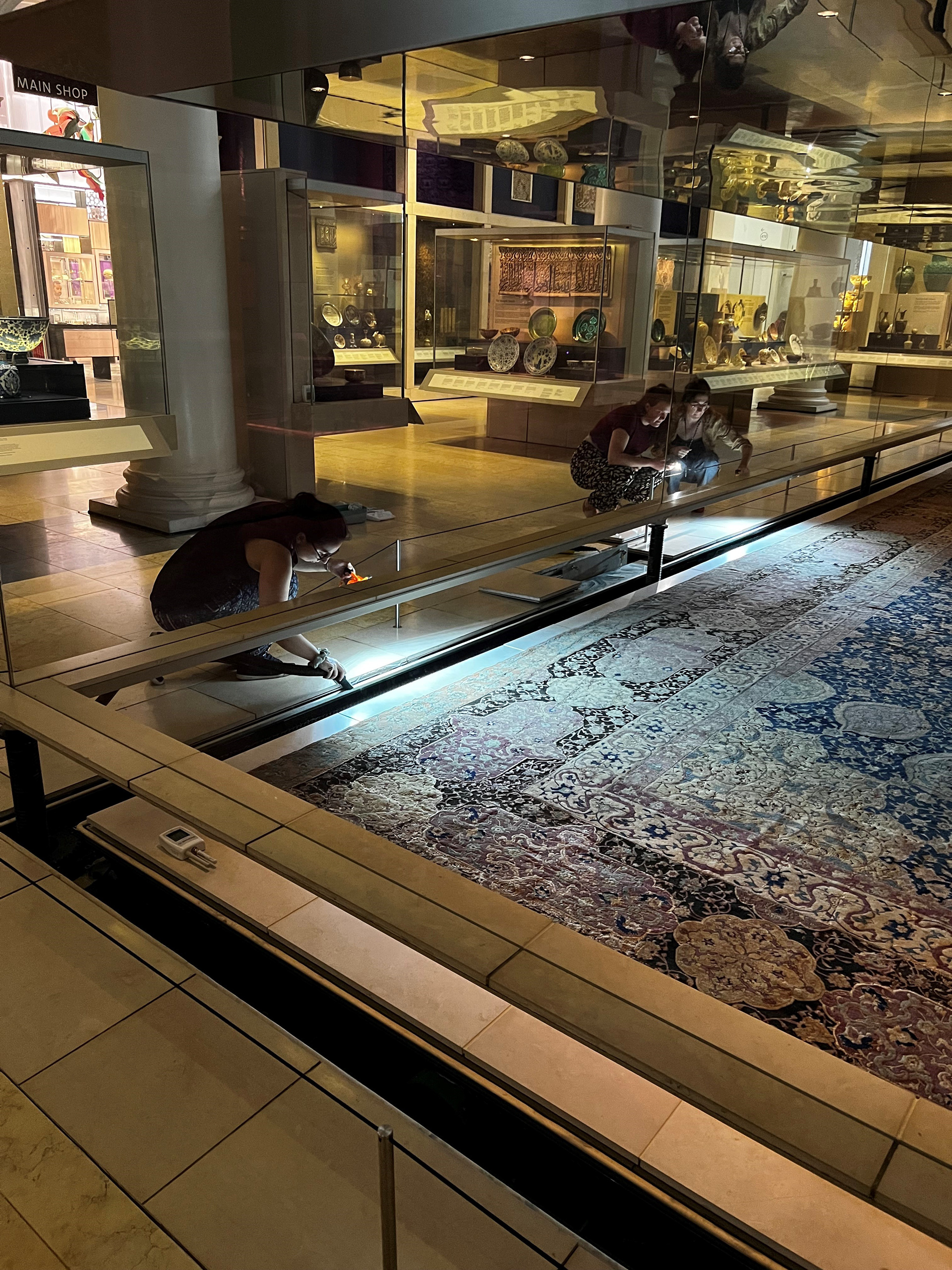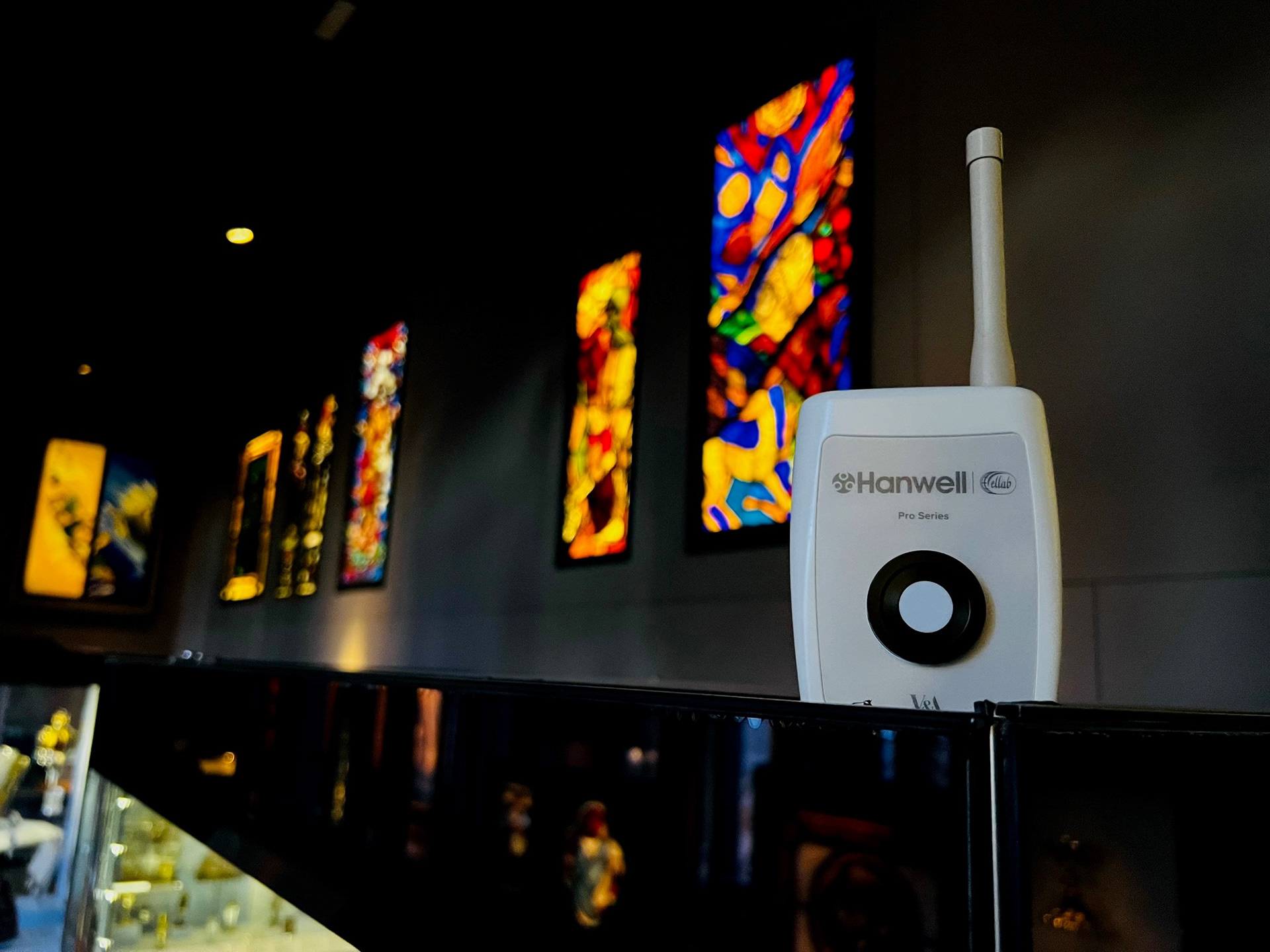the Environmental Monitoring System (EMS)
I joined the Victoria and Albert Museum (V&A) as a data scientist in the Preventive Conservation team. I worked on the EMS project team to install the V&A's new environmental monitoring system.
The EMS is made up of sensors for temperature, relative humidity, and light that are installed throughout galleries, back of house spaces, and object cases. You may see them when you're walking through the V&A's sites. Odds are, I installed them.
Sensors in Galleries




The Role
This wasn't your average data science role.
In the project, I installed hardware and sensors, set up the software, led training sessions, analysed environmental data, worked with stakeholders across the museum, created a visual identity for EMS, presented on the project, mapped out the sensor network, and much more.
I've been in every gallery in the South Kensington museum (and some creepy areas of the basement that I don't want to visit again). I installed sensors in the soon-to-be-opened Storehouse site, when the building was still a work in progress (pictured left).
The aim of the EMS is to empower people to make informed decisions on collections care, especially when heatwaves pose risks to collections, visitors, and staff. We analysed the data to understand the impact of high temperatures on different galleries and objects. You can read more about climate resilience for museum collections in the blog below.